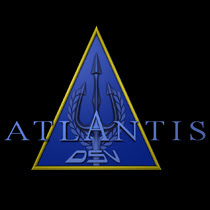Rarely do I feel compelled to post someone else's material on my own blog, but this one is particularly appropriate.
Peter Hanshaw is a friend and colleague of mine who graduated from the same course of Animation and Visual Effects and now works as an Environmental artist at Blue Tongue studios in Melbourne - a games studio under THQ most recently responsible for "de Blob" for the Nintendo Wii.
Truth be told, there isn't much I work on that doesn't go under his eyes and across his desk before it finally finds its way online. Indeed, not everything Peter has to say about my work may be full of praise, but more importantly his critiques are honest, constructive and helpful.
Yesterday he tagged this for me on Facebook.
Working in virtual space all day has its advantages, to be sure. You dont have to worry too much about budget, running out of paint is a non-issue, and there is always the off-hand chance that you can defy physics without making the universe implode, explode or turn into some weird mess of spaghetti*.
But all that aside, digital art lacks something vitally important. Its not the lack of stability, the mind numbingness of almost constant crashes (restart universe error) or the fact that you gradually earn yourself a monitor tan from constantly sitting infront of a computer.
What detracts from it the most is the fact that it is not tangible. You can't play with what you have just made. You can't walk around in those echoing coridors, you can't ever fly beside the massive star-ship.
What you see is essentially all there is to it. From one angle it looks like a complete world, but from any other angle it becomes clear that its all an illusion.
Those mountains in the background? Just a flat canvas, painted in photoshop. The walkers? Gemetric data rendered from a 3d application. Is any of it tangible? No. None of it is real.
But combined together, in just the right way, for a brief moment they form the idea, feeling and tone of a world much larger than the individual ingredients. They pave the way for the audience's imagination to *create* the world that you want them to see. Just a brief flicker, and suddenly there is a swirling sandstorm, the grind of the worn gears in the machine's leg, the glint of sun lighting up the flank of the beast, its all there in the picture, it just needs a receptive audience to give it life.
Sometimes its hard to create things in the virtual world. You know from the start exactly how many polygons are in the model, how many points it is made out of. You can see each individual element that makes up the whole picture. You know exactly how fake it is, rather than how real it looks.
It isn't always like that. Sometimes you get swept up in the creation, almost as if what you are making is making itself, you are just pressing the buttons. Its times like that, when you look up and suprise yourself, that make digital art worth all the time and effort.
It almost makes up for the constant crashing too.
*I still havn't got the hang of string theory...
The reason I post this here is because I feel it very elegantly describes what it is that I - and others - do as 3D modellers and artists.
Cheers,
-J
Friday, June 12, 2009
Subscribe to:
Post Comments (Atom)



No comments:
Post a Comment